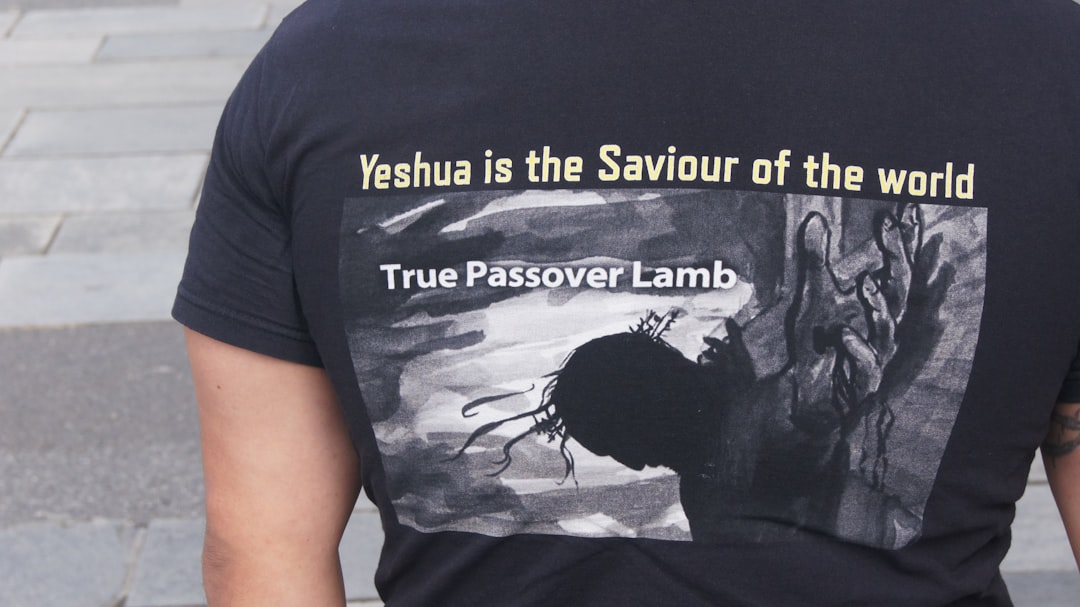Sin offering is one of the most significant for sacrifices in Judaism and Christianity, but little is known about its true meaning and purpose. This blog post, therefore, sheds light on the significance of sin offering in biblical times, how it was performed, and its role in forgiveness and atonement. Read on to discover more about this essential, yet often overlooked aspect of ancient ritual tradition.
The Meaning and Purpose of Sin Offerings

Sin offerings in both Judaism and Christianity play a vital role in the forgiveness and atonement of sins. But what exactly is a sin offering and what is its significance? Here’s what you need to know:
-
The purpose of a sin offering is to acknowledge the guilt of an individual or community for breaking God’s law. It serves as a means of repentance, confession, and seeking mercy from God.
-
Sin offerings were not solely confined to the Old Testament, as they still hold significant meaning in Christianity today. In Judaism, sin offerings were part of the daily sacrificial rituals performed by the priest in the Temple. The burning of the offering on the altar represented the purification and expiation of sin in the eyes of God.
-
The Jewish tradition of sin offerings was later adopted by Christianity, where it is viewed as a spiritual sacrifice. It is believed that Jesus Christ’s death and resurrection served as the ultimate sacrifice that redeemed humanity, taking away the sins of the world.
-
Sin offerings were performed in a specific manner, following strict guidelines set by God’s law. For example, in Leviticus 4, the offering had to be a male animal without blemish, and the individual seeking forgiveness had to lay their hand on the animal’s head, transferring their guilt onto the animal. The animal was then slaughtered, and its blood was sprinkled on the altar.
-
Sin offerings were also unique in their use of blood, as it represented the life of the animal given in exchange for the sins committed by the person or community. The sacrifice of animals served as a ritualistic reminder of the seriousness of sin and the price that must be paid for forgiveness and cleansing.
Understanding sin offerings is crucial to comprehending the significance of forgiveness and atonement in both Judaism and Christianity. These offerings teach us the importance of repentance, confession, and seeking mercy from God. Through sin offerings, we can find redemption and a renewed sense of holiness in our lives.

So if you ever find yourself struggling with guilt or feeling the weight of your sins, take comfort in knowing that the ritual of sin offerings exists to help you find your way back to God’s grace.
Sin Offerings in the Old Testament and Leviticus
In the Old Testament of the Bible, sin offerings were one of the rituals prescribed by God for the Israelites to follow. These offerings were seen as a way to atone for sins committed by individuals or by the community as a whole. The book of Leviticus gives detailed instructions on how sin offerings were to be performed and who was authorized to carry them out.
In Leviticus, it states that a sin offering could be made by anyone who had committed a sin unintentionally, such as breaking one of God’s commandments. The offering itself was usually a young bull or goat, which would be brought to the altar by the sinner. The person would then place their hand on the animal’s head, confess their sin, and slaughter the animal. The priest would then perform a series of rituals with the blood of the animal, which were seen as purifying agents.
According to Leviticus, sin offerings had to be performed in a specific way to be effective. The person bringing the offering had to be sincere in their confession of sin, and the animal had to be without blemish. The priest had to follow a strict set of guidelines for how to handle the blood and dispose of the carcass, and the whole ritual had to be performed in the tabernacle or temple.
The purpose of sin offerings was to restore a person’s relationship with God. Sin created a state of uncleanness that needed to be addressed before a sinner could approach God. The ritual of the sin offering was seen as a way to remove that uncleanness and restore a person’s holiness before God.
While sin offerings were an important part of Jewish tradition in the Old Testament era, Christians believe that the ultimate sacrifice for sin was made by Jesus on the cross. In the New Testament, Jesus is seen as the perfect Lamb of God, whose sacrifice made all other sin offerings obsolete. Christians believe that through faith in Christ, they can be forgiven and reconciled to God without the need for elaborate ritualistic sacrifices.
In conclusion, sin offerings were an important part of Jewish tradition in the Old Testament, but their significance has been replaced by the ultimate sacrifice of Jesus on the cross in Christianity. Through the blood of Jesus, believers can find forgiveness, redemption, and new life.
How Sin Offerings were Performed in the Temple
When it came to offering a sin offering, the process in the temple was very specific and ritualistic. Here is a step-by-step breakdown of how sin offerings were performed:
-
Choose the animal – The person making the offering would choose a specific animal to sacrifice according to the guidelines outlined in Leviticus. The animal had to be unblemished and could be either a bull, goat, or lamb.
-
Bring the animal to the priest – The person would bring the animal to the priest at the temple, and the priest would help guide them through the process.
-
Confess the sin – The person making the offering would then verbally confess their sin to the priest. This confession was an important step in acknowledging their wrongdoing and seeking forgiveness.
-
Lay hands on the animal – After confessing, the person would lay their hands on the animal’s head, symbolically transferring their guilt onto the animal.
-
Slay the animal – The priest then slaughtered the animal in a specific way, spilling its blood at the base of the altar.
-
Burn the animal – The priest then burned the animal, either entirely or a portion of it, as a sacrifice to God.
-
Purify the blood – The blood of the animal was then collected and taken into the Holy of Holies, where it was sprinkled on the Ark of the Covenant as a symbol of purification.
This process of offering a sin sacrifice was incredibly meaningful and significant in both Judaism and Christianity. It symbolized the seriousness of sin and the need for repentance and sacrifice to seek forgiveness from God. By understanding the significance and process of sin offerings, we can better appreciate the depth of mercy and grace offered to us through Christ’s ultimate sacrifice on the cross.
The Significance of Blood in Sin Offerings

In both Judaism and Christianity, blood plays a crucial role in the concept of sin offerings. In fact, the use of blood within a sin offering may seem strange to those unfamiliar with the practice. However, studying the significance of blood within this context can give us insight into the spiritual significance of the act of atonement.
In the Bible, blood is often a symbol of life, as well as a powerful representation of the sacrifices required to achieve true forgiveness and redemption. Blood was seen as something holy, a sacred substance that should be treated with great respect and dignity. In Leviticus 17:11, we discover that “the life of the flesh is in the blood” and that it is the blood of the sacrifice that can bring about atonement. This is why the use of blood is such an important part of sin offerings.
When performing a sin offering, the priest would take the blood of a sacrificial animal and sprinkle it on the altar. This was seen as a way of dedicating the life of the animal to God, and by extension, the life of the person associated with the sin. The blood symbolizes a life given up, as well as an acknowledgement of the depth of the person’s sin.
The overall process of a sin offering involved a sequence of ritualistic actions that culminated in using the blood to unite with the altar, which represented God’s divine presence. Once the blood was used, the priest would remove the animal’s hide and burn the rest of the flesh as an offering to God. This was seen as a way of completely dedicating the animal to God, and by extension, acknowledging God’s authority and sovereignty.
The use of blood in sin offerings highlights the importance of asking for forgiveness and atonement for our sins. Just as the life of the animal was given, so too, must we be willing to give up the things that lead us to sin. Whether it is our pride, our envy, or anything else, we must be willing to give those things up in order to find true atonement and redemption.
In Christianity, the concept of sin offerings has evolved. Instead of sacrificing animals, believers rely on the ultimate blood sacrifice of Jesus on the cross. His death was seen as a sacrifice that redeemed humanity from its sin and paved the way for forgiveness and eternal life. When Christians take communion, they symbolically drink the blood, similar to the way the priest used it in a sin offering. This act serves as a celebration of Christ’s ultimate sacrifice and of the redemption it offers.
« The Ultimate Guide to Becoming a Man of God: A Journey of Faith, Character, and Purpose
Understanding the Eternal Security Debate in Christianity: Can a Christian Lose Salvation? »
In summary, the significance of blood in sin offerings serves as a reminder of the sacrifices required to achieve forgiveness and redemption. It is also a powerful symbol of the sacred and holy nature of life and represents the depth of our sin. Though the practice of sin offerings has changed over time, the concept of giving up something important as a way to show our willingness to atone remains a central tenet of faith in both Judaism and Christianity.
Comparing Sin Offerings with Other Ritual Offerings
In the biblical times, sacrifices were a common ritual for many cultures. In particular, sin offerings and burnt offerings were essential in Judaism and Christianity. While both these rituals involved the sacrifice of animals, they provided different functions.
Here are some of the differences between sin offerings and other ritual offerings:
-
Purpose
Sin offerings were specific sacrifices that people made for unintentional sins. It was meant to atone for the guilt of the sinner and show repentance. This offering was unique in that it wasn’t for thanksgiving or commemoration. Burnt offerings, on the other hand, were for expressing gratitude and honoring God. They were usually voluntary and done when someone wanted to show appreciation for blessings they had received. -
The nature of the sacrifice
Both sin offerings and burnt offerings involved killing an animal, but the difference is in the way the animal was sacrificed and what happened to the remains. In sin offerings, the animal was slaughtered and the blood was sprinkled on the altar. The meat was then given to the priest to eat, or it could be burned outside the camp. In contrast, burnt offerings were entirely consumed by fire on the altar. The ashes from the sacrifice were collected and disposed of in a clean place outside the camp. -
Frequency
Sin offerings were required whenever an unintentional sin was committed, and the person had to make an atonement for it. Burnt offerings, on the other hand, were done frequently and often in times of celebration. The practice was integral to the culture and tradition of the people and was necessary in expressing thanksgiving or petitioning for blessings.

In conclusion, sin offerings and burnt offerings were two distinct rituals that served different purposes. The former was for atonement while the latter was for thanksgiving. Nevertheless, both were important in Jewish and Christian traditions and served to create a significant connection between the people and their God.
The Role of Sin Offerings in Forgiveness and Atonement
If you’re not familiar with the concept of ancient sin offerings, it might be challenging to wrap your head around how they tie into forgiveness and salvation. Today, we’ll explore the significance of sin offerings in Christianity and Judaism.
Sin offerings served a crucial role in the process of forgiveness and atonement. When an individual committed a sin, they were considered unclean and unable to enter into the presence of God. Sin offerings provided a way for them to make amends with God and reintegrate themselves into the community.
In Judaism, sin offerings were a ritualistic practice outlined in the book of Leviticus. Depending on the severity of the sin, individuals might have to bring a different type of animal as a sacrifice. For example, a burnt offering for unintentional sin, a grain offering for minor sins, and a bull for more severe sins of the high priest.
The offering itself was performed in the temple, typically in front of an altar, with the priest present to conduct the ritual. The animal would be killed, and its blood sprinkled on the altar, signifying the atonement of sin. The carcass would then be burned outside the camp, symbolizing the removal of that sin from the community.

While this process may seem harsh and extreme, it was born out of a deep understanding of holiness and sin’s impact on the community. Sin offerings were also intended to remind the individual of the gravity of their actions and to prompt repentance and confession.
In Christianity, the old testament sin offerings paved the way for Jesus Christ, the ultimate sin offering. Jesus’ death on the cross served as the ultimate sacrifice, paying the price for all past, present, and future sins. Through belief in Jesus’ sacrifice, individuals receive forgiveness and are cleansed of all unrighteousness, even beyond ritualistic measures.
In conclusion, understanding sin offerings in Christianity and Judaism provides a backdrop for the true significance of Jesus Christ’s sacrifice on the cross. Sin offerings served to atone for the individual’s sins and restore their relationship with God and the community. Though no longer practiced in the same ritualistic manner, the principles of repentance, confession, and sacrificial atonement are still imperative to the Christian faith.
The Importance of Understanding Sin Offerings in Christianity Today
As a Christian, understanding the significance of sin offerings can deepen your appreciation for the sacrifice that Jesus made on the cross. Sin offerings were a vital part of the Old Testament tradition and are still relevant in the modern Christian faith. Here are some reasons why it’s essential to understand sin offerings in Christianity today:
-
Provides a glimpse into the Holiness of God.
The concept of sin offerings emphasizes the holiness of God and how He demands complete righteousness from His people. The offering up of a perfect, blemish-free animal on the altar signifies the seriousness of sin and highlights the significance of atonement to restore fellowship with God. Understanding the significance of sin offerings thus helps Christians to appreciate God’s holiness and His mercy towards humanity. -
Offers a Symbolic Representation of Christ’s Ultimate Sacrifice.
In Christianity, sin offering is a foreshadowing of Jesus’s ultimate sacrifice on the cross. Jesus offered Himself as a sacrificial lamb to atone for the sins of humanity, replacing the need for animal sacrifices. By understanding sin offerings, Christians can appreciate better the significance of Jesus’s death and resurrection and realize how His sacrifice had brought peace to our relationship with God. -
Guides us to Confession and Repentance.
Understanding sin offerings can also teach us about the necessity of repentance and confession. Sin offerings required the participant to confess and take ownership of their transgressions; only then could they make an offering to God. As Christians, we must acknowledge our sins, repent, and confess to God for forgiveness. This step is important in growing closer to God and maintaining our relationship with Him. -
Emphasizes Our Unity with God.
Sin offerings emphasized the idea of unity and community. God instructed the people of Israel to bring their offerings to the altar in the presence of the priest to seek forgiveness, signifying unity with God and the community. In Christianity, believers are one body of Christ, and the concept of unity is constantly emphasized. Understanding the significance of sin offerings can help Christians to appreciate the importance of unity and community within the Church.
In conclusion, sin offerings may seem ritualistic and outdated, but they have significant implications for Christianity today. They can help us understand the holiness of God, appreciate the ultimate sacrifice of Jesus, guide us to confession and repentance, and emphasize unity with God. By studying sin offerings in Christianity, we can grow closer to God and become better followers of Jesus Christ.


















